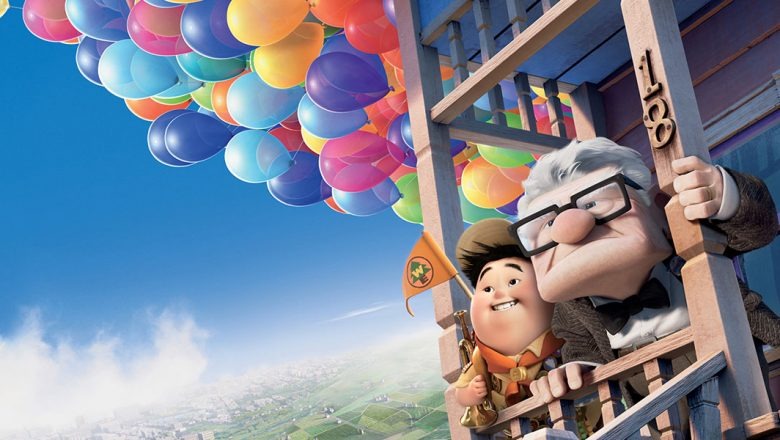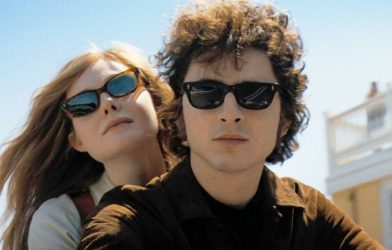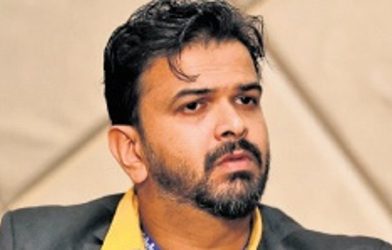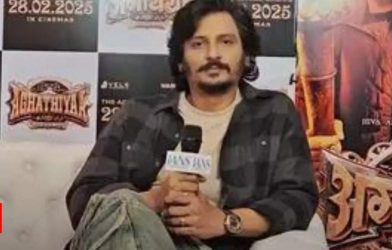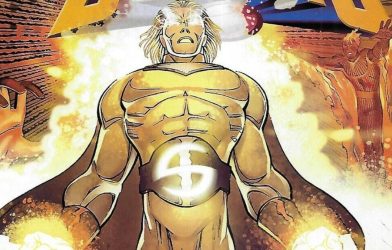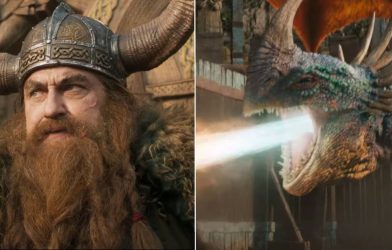As the beloved animated film turns 15, Hasitha Fernando looks at the story behind Pixar’s Up…
There’s nary a soul out there whose heartstrings weren’t tugged by the utterly beautiful “Married Life sequence” featured which plays out at the very beginning of this animated feature. Although the rest of the movie is pure joy ridden escapist cinema no one will ever deny how unforgettable that four-minute montage truly was. And so, as Up celebrates its 15th anniversary we take a look back at what went on behind-the-scenes during the production of this poignant animated adventure…
The fantasy of a flying house stemmed from Pete Docter’s personal experiences
From a very young age Pete Docter had a natural aptitude for creativity making flipbooks and animated shorts with movie cameras. A self-taught cartoonist by nature he has described his interest in animation as a way to “play God” making up nearly living characters that have been inspired by the efforts of producer Walt Disney, cartoon director Chuck Jones and cartoonist Jack Davis. Although Docter had his eyes set on working for Walt Disney Animation Studios, he made a very weird call and chose Pixar instead. It was a decision that ended up changing his life forever. When conceiving the story of Up, which was originally titled Heliums, he wanted to develop a fantastical premise of being able to escape the travails of life using a flying house which was something Docter wished he himself could do when life became too overwhelming and irritating. What an unusual source of inspiration.
A Peter Dinklage film became a major influence on the movie’s story
The concepts that Docter & co. toyed around with for Up differed greatly from the final product we saw onscreen. The initial version featured a floating city on an alien planet filled with Muppet-like creatures, and the strange adventures of two estranged brothers who crash land on earth. Well… long story short Pete Docter didn’t think that this concept would fly (no pun intended) and went back to the drawing board. When Bob Peterson, who Docter was working with up to this point, had to leave the project to co-direct Ratatouille (2007) writer/director Tom McCarthy came aboard to work with Docter. The duo decided to get rid of the flying city and replace it with a single flying house whose sole occupant was a curmudgeonly old man. It was in this context that Tom McCarthy’s very own effort The Station Agent (2003), also featuring a grumpy Peter Dinklage, became the biggest single influence for Up.
The flick reflected Pete Docter’s relationships with Disney veterans
During interviews Pete Docter noted how the film reflects his friendships with Disney veterans such as Frank Thomas, Ollie Johnston, and in particularly Joe Grant. Grant who had worked on Disney classics like Snow White and the Seven Dwarfs (1937), Pinocchio (1940) and Dumbo (1941) often gave Docter great advice on how best to tackle an animated film. In order to make the much-needed emotional connection with audiences Grant reminded Docter the importance of having an “emotional bedrock” in the story because of how wacky the adventure would become; in Up it was Carl mourning the loss of his wife. To honor his memory Docter based much of Ellie’s personality on his beloved mentor when making his film.
Dug was originally created for a different project that never materialized
Anyone who has watched Up would vividly remember Dug the fun-loving golden retriever, who speaks via a special collar that translates his thoughts. But Dug did not start his life as a character in Up’s story at the very outset. Dug was initially conceived by Pete Docter and Bob Peterson for an altogether different project that never materialized, and as the character was just lying around unused the pair decided to include him in Up, as they felt he’d be refreshing addition to their story. Since the artists and animators needed to gain insight on canine communication, doggie body language and pack behaviors a consultant veterinarian and trainer by the name of Dr. Ian Dunbar was hired to assist them realize Dug. The ‘Point Pose’ that Dug adopts – where his entire tail, body and head are in a straight line – is meant to be an homage to the identical pose Mickey’s dog Pluto often makes, in fact Dug’s color scheme is also similar to that of Pluto’s.
About 400 boys were auditioned to find the right actor to voice Russell
Russell is a young “Wilderness Explorer” scout who becomes Carl’s accidental stowaway when he heads to Paradise Falls on his flying house. The unusual bond he and Carl develop over the course of their journey is the beating heart of the epic adventure, so finding the right person to voice Russell was integral for Docter. Around 400 boys were auditioned for the role until they settled on young Jordan Nagai, who was simply accompanying his older brother for the audition. The young actor stood out immediately since he would not stop talking, and Docter and his team realized he had the ideal personality and mannerisms they envisioned for Russell.
The villainous Charles Muntz may be a reference to a real-life Disney villain
Charles Mintz was a Universal Picture executive who commissioned Walt Disney and Ube Iwerk to create a new animated character for Universal Pictures. The result was Oswald the Lucky Rabbit, who became immensely popular and bore a striking resemblance to Mickey Mouse’s would be character design. In 1928 Mintz stole the production rights to the highly-successful character and moved the production of Oswald the Lucky Rabbit over to his newly established Winkler Studios, which belonged to his wife. However, this unexpected twist of fate galvanized Walt Disney into creating a new IP and thus, Mickey Mouse was born and the rest, as they say, is history. Whether unintentionally or otherwise the name given to the primary antagonist of the film was Charles Muntz, a disgraced explorer driven murderously insane by his long search for the “Monster of Paradise Falls”. In various interviews, Docter mentioned Howard Hughes and real-life adventurers Lindbergh and Percy Fawcett served as inspirations for Muntz.
Pixar artists spent three days in Venezuela seeking inspiration
In the film, Paradise Falls was the fictitious place where Carl and Ellie dreamt of going to when they were young, so Docter wanted to the locale to be as dreamlike and otherworldly as possible. For that he and his team of Pixar artists sought their inspiration in Venezuela. Docter decided to make Venezuela the movie’s setting after Ralph Eggleston, who wrote and directed the Academy Award winning short film For the Birds, gave him a video of the tepui mountains of Canaima National Park. Eventually Docter and eleven other Pixar artists spent three days reaching Monte Roraima by airplane, by jeep, and by helicopter. They then spent three nights in the wildlife reserve painting and sketching – encountering the unique flora and fauna of their surroundings.
Storyboarding the ‘married life sequence’ itself was a tearjerker for the production team
Has there ever been a more moving sequence in an animated film than the utterly beautiful “Married Life sequence” in Up? I don’t think so. The wordless montage which plays out like a series of Polaroid home movies and lasts a little over four minutes is truly a bona fide tearjerker of the first water. Even in storyboard form, the memorable sequence brought members of the production team to tears. However, according to Docter over the course of the movie’s production the sequence underwent multiple changes until they settled on a more sorrowful version of the montage. The heart-rending sequence was also the first assignment tackled by composer Michael Giacchino: “We knew that was going to be one of the most difficult scenes in the film, so we tackled that first, and I was just working really hard to make that scene really work because I knew that was going to inform the rest of the story”.
The film’s score was a true masterpiece of its own right
To say Michael Giacchino composed one of the most poignant musical scores in animation film history would be quite an accurate assessment. It is the fourth animated film to nab the Academy Award for Best Original Score since Beauty and the Beast (1991), Aladdin (1992) and Pocahontas (1995), all of which were scores produced by musician Alan Menken. Up is the third Pixar film score written by Giacchino, after his successful work on the superhero spy caper The Incredibles (2004) and the gastronomic comedy drama Ratatouille (2007), both of which possessed their own distinct style and flavor. What Pete Docter wanted out of the music, more than anything, was to land the right emotional punch, so Giacchino wrote a character theme-based score that he thought would enhance that impact. Up’s score also became the tenth musical score (and the third from an animated film) to win the Grammy, Golden Globe, and Academy Award for “Best Original Score”. Quite the feat and then some.
A massive box-office hit, glowing critic reviews & awards success
Up earned $293 million in the United States and Canada and $442.1 million in other countries, for a worldwide total of $735.1 million on a production budget of $ 175 million. In terms of box-office grosses Up was the sixth-highest-grossing film of 2009. The Pixar animated flick drew major critical acclaim upon its release and as of writing has an approval rating of 98% based on 297 professional reviews on the review aggregator website Rotten Tomatoes, with an average rating of 8.7/10. The critical consensus of the website reads; “An exciting, funny, and poignant adventure, Up offers an impeccably crafted story told with wit and arranged with depth, as well as yet another visual Pixar treat.”
The 96-minute 3D animated film opened the 62nd Cannes Film Festival on May 13, 2009, the first animated movie to do so and received a standing ovation when it debuted. Acclaimed film critic Roger Ebert gave the film four out of four stars calling it “a wonderful film” while, The Hollywood Reporter lauded the film as “Winsome, touching and arguably the funniest Pixar effort ever, this gorgeously rendered, high-flying adventure is a tidy 90-minute distillation of all the signature touches that came before it”.
The movie was nominated for a total of five Academy Awards for Best Picture, Best Original Score, Best Original Screenplay, Best Animated Feature and Best Sound Editing and ended up nabbing the golden nudie for Best Original Score for Michael Giacchino and Best Animated Feature for Docter & his team. The effort also won awards in the same categories at the BAFTAs, Golden Globes and the Critics Choice Awards as well. Due to the high popularity of the IP several short-films – Dug’s Special Mission (2009), George & A.J. (2009) and Carl’s Date (2023) – an adventure videogame, and a Disney + spin-off television series titled Dug Days (2021) were produced subsequently.
What are your thoughts on Up? Let us know on our social channels @FlickeringMyth…
Hasitha Fernando is a part-time medical practitioner and full-time cinephile. Follow him on Twitter via @DoctorCinephile for regular updates on the world of entertainment.

